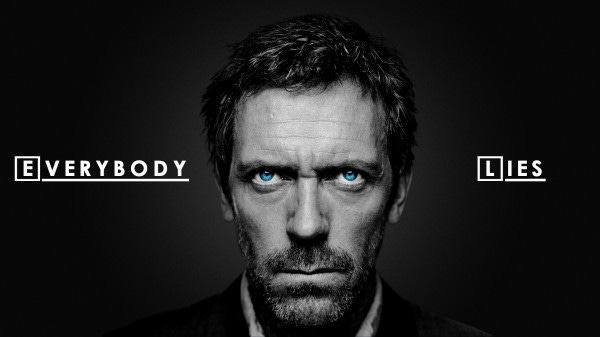Clients Don't Tell the Truth: How to Discover Their True Needs
As much as we'd like to believe in a perfect world where clients express their wants and needs clearly and directly, the reality is harsh: Everyone lies. And it's not their fault! They may not know what they really need, they may fear appearing incompetent, or they may simply be in a bad mood and decide to "entertain" you with a distorted version of their needs. Clients are a mystery wrapped in fog, hidden somewhere in the mysterious realm of marketing.
Customers Don't Tell the Truth: How to Discover Their True Needs
Sounds terrible, doesn't it? But it's no cause for despair. On the contrary, it's a challenge! If customers always told the truth, our job would be as boring and predictable as last quarter's sales report. Instead, we have an exciting game of who outsmarts who - you outsmart them, or they outsmart you.
Admit it, it would be boring if a client walked in and said, "I need to increase sales by 30%, my budget is 10 million. Let's do business!" No, we love it when a client says, "We're looking for innovative approaches," which means, "We don't know what we want, but make it look impressive. That leaves room for creative analysis and out-of-the-box solutions. To get to the heart of the matter, you have to learn to read between the lines. How? Let's find out.
Why do they lie?
Let's start with this: clients don't intentionally lie-they simply live in their own world of illusion. Imagine this: You walk into a restaurant and see a menu with a hundred items. What are you going to order? Probably whatever looks tastiest in the pictures. But at the end of the evening, you realize that all you really wanted was fries and a burger, but you ordered lobster to look fancy. Customers often want "lobster," but what they really need is a "burger.
The problem is that clients often worry too much about how they look in the eyes of the contractor. They don't want to look stupid. What if someone says, "You've been in the market for 15 years and you still don't know what you need?" To avoid such embarrassment, they take a more diplomatic approach. This is the case when a customer says, "We need something innovative," which means, "Our business is a mess, but we can't admit it. Business lies aren't always malicious-they often stem from a desire to appear competent.
Sometimes customers don't realize what their problem is. Imagine a patient who goes to the doctor for a headache, but omits the fact that he or she drank too much alcohol the night before. Clients are like that patient: they talk about the symptoms but not the causes because they don't see the whole picture. The expert's job is to bring out the real problem.
Methods for Reading Between the Lines
So how do we get the truth from a client who either doesn't know it or is being evasive? One approach is to ask "surprise" questions. When a client is relaxed and answering routine questions about budgets and KPIs, throw in something unexpected: "What superpower would you like to have to solve your business problems?" Yes, it sounds strange, but such unexpected questions often shed light on what the client really wants but can't articulate.
Another method is to create stressful situations. Of course, don't lock the client in a room until they confess their true intentions (although this is a fascinatingly unconventional idea). Instead, apply constraints: time, resources, or ideology. When a client is faced with "tight boundaries," they inadvertently reveal their true priorities.
Another technique is sociological: the "indirect survey". Ask the customer to describe not his problem, but the problem of a "hypothetical company". You know, the classic "ask a friend" scenario. This works because people are more honest when talking about "others. The key is to create an environment where the customer can speak the truth without even realizing it.
Listen, Don't Ask
The easiest way to uncover a client's true needs is to stop asking directly. It sounds ridiculous, but often when we ask direct questions, the client tenses up and begins to speak in generalities. But by observing their actions, you can understand what they really need.
For example, if a client says they need "innovation" but is nervously going through old files, it's a signal that they really need basic organization, not innovation. Actions speak louder than words.
And don't underestimate the power of reading between the lines. If a customer keeps bringing up the same issue, even if it seems minor, it's probably more important than they're letting on. In such cases, you need to pick up on the signals they're unintentionally sending. Better yet, develop the skill of "mind reading. But that's beyond traditional marketing-though it may be its next frontier.
How to work with the truth
All right, let's say you've discovered what the customer really wants. What comes next? You need to know how to handle this knowledge. Don't immediately hit them with the blunt truth-that could backfire. Imagine the client nervously recalling all the times they told you something wrong. They'll feel exposed, which doesn't help build trust.
The secret is to gently incorporate the insights into your proposals. For example, if a client says they want innovation but are afraid to implement it, suggest "evolutionary" solutions-something new but familiar to them. The idea is to "sell the truth" in small doses without causing cognitive dissonance.
Ultimately, your goal isn't just to uncover the client's true needs, but to create an atmosphere in which they willingly trust you and your solutions. Sometimes achieving this is as simple as stopping the direct questions and starting to listen to what their actions are saying.




